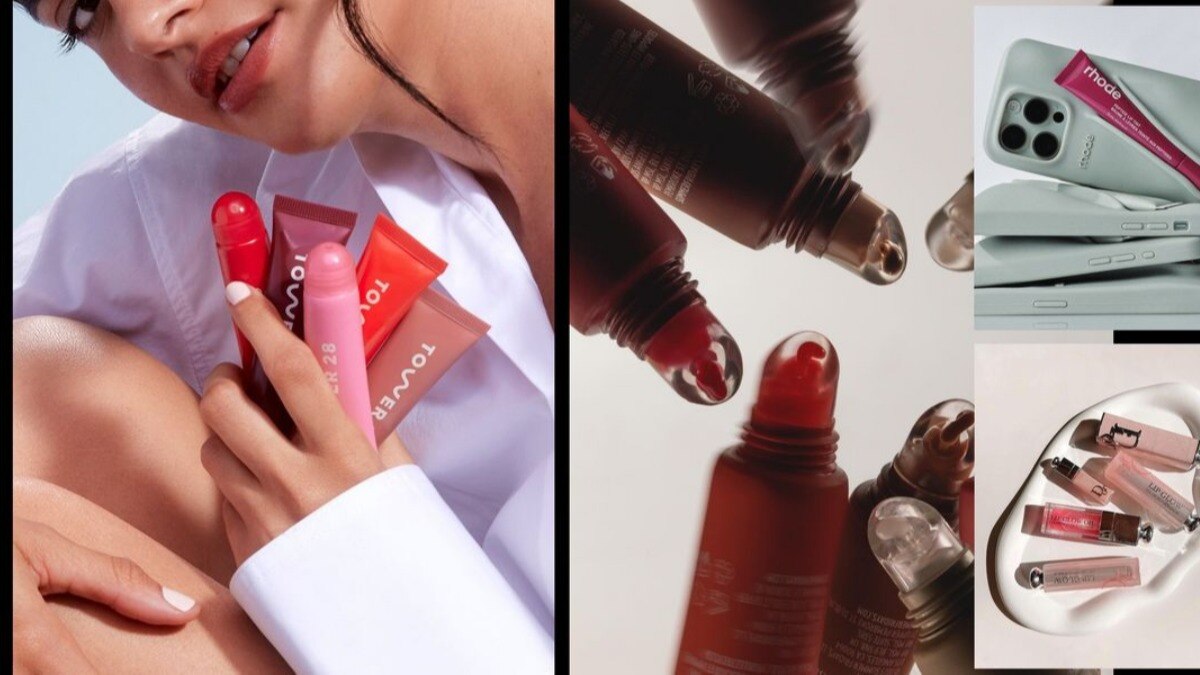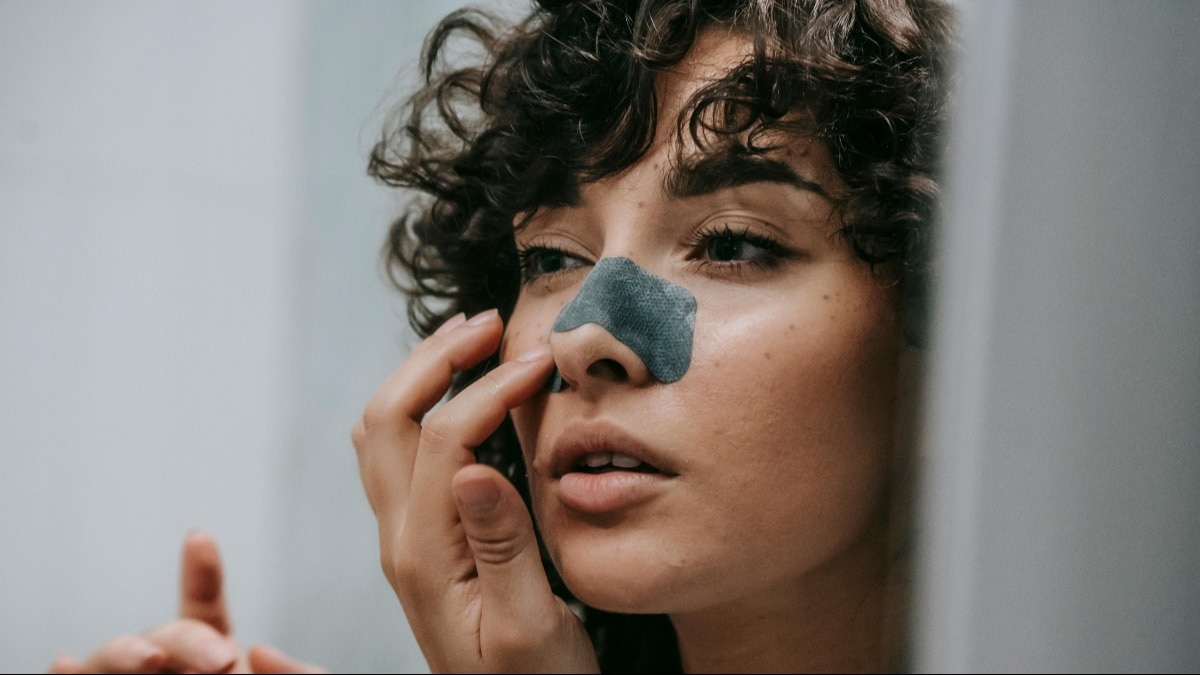
A beginner’s guide to chemical exfoliation
The dos, the don’ts and everything you need to know


Thanks to social media, most of us consume truckloads of beauty content on a daily basis. Trends cropping up left, right and centre make us question what our skin truly needs to be happy and balanced. Although, inarguably, the three most crucial steps every skincare routine needs (no matter how much you enjoy doing your convoluted 12-step routine) are cleansing, sun protection, and adequate moisturisation. And of course, exfoliation comes in as a close fourth. Regular exfoliation not only improves the texture of your skin but also ensures the effectiveness of all the other products you use. How? For that, we’ll have to look a little deeper.
There are two kinds of exfoliants. The first kind is physical—these work manually to rid the skin of all dead cells. The second and far more fascinating (no offence to your trusty scrub) is chemical. These exfoliants work by dissolving the bond that holds skin cells together, thereby, thoroughly cleansing the skin in a way that does not agitate it. No more rubbing your skin raw.
We spoke to Dr Chytra Anand, Celebrity Cosmetic Dermatologist, and founder of Kosmoderma and SkinQ, who explained to us that chemical exfoliation is a process where dead skin on the epidermis (outer layer of the skin) is removed gently by active ingredients without causing any irritation or abrasions to the skin. She went on to further explain the process, “Active ingredients are ingredients that can actually penetrate through the top layer of the skin and work on the inner skin cells to cause an effective change.”

However, here’s the thing—chemical exfoliants can be tricky little buggers. If you don’t know exactly what you’re doing, you risk making your skin permanently angry with you and we all know how that ends. So, if you’re wondering where to start, consider this your chemical exfoliation handbook. Chemical exfoliation 101, if you will.
What are the chemical exfoliants everyone should know about?
When you’re attempting to chemically exfoliate your skin at home, there are three categories of exfoliants you need to keep in mind—Alpha Hydroxy Acids (AHAs), Beta Hydroxy Acids (BHAs) and the underdog, Polyhydroxy Acids (PHAs).
Alpha Hydroxy Acids (AHAs)
Dr Anand says, “AHAs are more hydrophilic. This means they have a propensity towards water. These are great for daily exfoliation.”
AHAs are water-soluble acids that are derived from natural substances like milk, almonds or sugarcane. They work on dry, oily or combination skin and help to visibly brighten the skin. But that’s just the tip of the iceberg. AHAs also promote collagen production, work on acne, smoothen out fine lines and wrinkles and increase the efficiency of other products by clearing the layer of dead skin cells. AHAs are good for maintenance, exfoliation and pigmentation.
Types of AHAs include Glycolic acid (derived from sugarcane), lactic acid (derived from milk), malic acid (derived from fruits), tartaric acid (derived from grapes) and mandelic acid (derived from bitter almonds).
Beta Hydroxy Acids (BHAs)
BHAs and AHAs are first cousins. Of course, not literally but it’s just easier to keep track when you consider them to be. BHAs are very similar to AHAs except for the fact that BHAs are oil-soluble. Dr Anand says, “BHAs are more lipophilic, which means they are great for oily and acne-prone skin.”

If you have oily skin and need to work on acne, blackheads or whiteheads, or unclog your pores, BHAs are at your service. Being oil-soluble means that they not only perform their primary exfoliation duties of ridding the skin of dead cells but also have the ability to seep into the skin to remove all the excess build-up. Along with all this, BHAs are also known to have anti-inflammatory and antibacterial properties.
Types of BHAs: Salicylic acid (derived from the bark of a willow tree) is the most commonly used form of BHAs.
Polyhydroxy Acids (PHAs)
An exfoliating acid that works in similar ways as its two friends we talked about earlier, PHAs are trending ingredients touted for their ability to hydrate the skin and banish fine lines. Dr Anand explains, “PHA is Poly Hydroxy Acid. It is not a natural acid but a blended formula in a lab. It is primarily used for sensitive, dull skin for gentle daily exfoliation.”
These acids have larger molecules which don’t allow them to penetrate the skin as deeply. This results in superficial but far gentler exfoliation which helps to even out the texture of the skin. For all those of you who have skin as sensitive as a peach, look for products with PHAs. They are so gentle that they will be the caretakers you didn’t know you needed for your skin.
Types of PHAs: Gluconolactone, Galactose, and Lactobionic acid.

Things to keep in mind
Know when enough is enough
While PHAs are gentle enough on your skin to be used on a daily basis, the others are not. Dr Anand advises starting chemical exfoliation every four weeks from the age of 21. If you’re between 25-35 exfoliate once every two weeks and from 35 onwards make it a weekly part of your routine.
Before you start using active ingredients, remember that they have an exfoliating effect so the protection of your skin is essential. In order to do this, we need to streamline our skincare routine. Dr Anand says, “Always remember that skin care involves five critical steps—cleansing, nourishment, protection, repair and boost. A chemical exfoliant or active ingredient will fall under the category of treat, repair and boost.” She further adds, “One should understand their skincare pattern. Overusing active ingredients can cause your skin to purge or cause adverse effects on the skin.”
If you use chemical exfoliants more often than they are needed, it can lead to breakouts. Or worse, these ingredients will strip off the natural moisture barrier of the skin leaving it as arid as a desert.

Always hydrate the skin after you exfoliate
Dr Anand emphasises that once you’re done with the chemical exfoliation step of your routine, it’s crucial to use a mask to close the skin cell pores. She says, “AHA or BHA can be used every day provided you’re sealing or repairing the skin with a ceramide-based moisturiser to restore the skin barrier. Typically, you should use actives at night, unless you’re using a broad-spectrum sunscreen with 40 and above SPF and a PA of 4+ rating.”
The SkinQ Glow Bright Mask for Tan Removal is both a mask and exfoliant built into one where the skin gets exfoliated while the mask from the clay also acts like a sealant. You can also use COSRX Balancium Comfort Ceramide Cream for post-exfoliation care.
Most people just skip over this step and it leads to permanent adverse effects on the skin. However, if you keep these two things in mind, chemical exfoliants can be your skin’s best friend.









